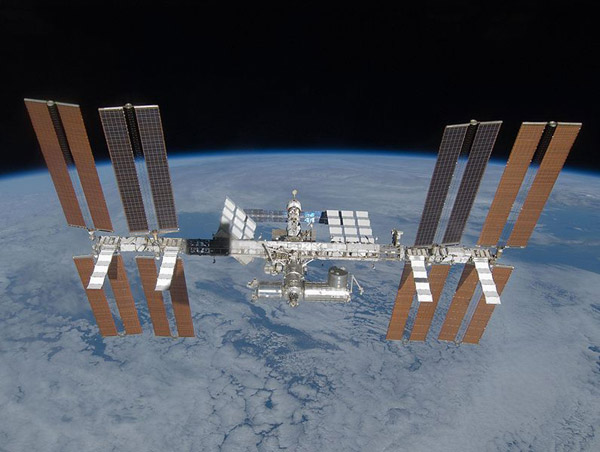International Space Station
Updated: 2011-09-26 14:17
(Agencies)
|
|||||||||||
 |
|
International Space Station [File Photo] |
The International Space Station (ISS) is a habitable, artificial satellite in low Earth orbit. The ISS follows the Salyut, Almaz, Cosmos, Skylab, and Mir space stations, as the 11th space station launched by man not including the Genesis I and II prototypes.
The ISS serves as a research laboratory that has a microgravity environment in which crews conduct experiments in many fields including biology, human biology, physics, astronomy and meteorology.
The station has a unique environment for the testing of the spacecraft systems that will be required for missions to the Moon and Mars. The station is expected to remain in operation until at least 2020, and potentially to 2028.
Russia's next space station, OPSEK, will be separated from the Russian orbital segment (RS) in 2020 to form a new, separate space station. Like many artificial satellites, the ISS can be seen from Earth with the naked eye.
The ISS is operated by Expedition crews, and has been continuously staffed since 2 November 2000—an uninterrupted human presence in space for the past 10 years and 328 days. As of September 2011, the crew of Expedition 29 is aboard.
The ISS combines three space station projects, the Soviet/Russian Mir-2, the American Freedom project which includes the Japanese Kibō Laboratory, and the European Columbus space station. Budget constraints led to the merger of these projects into a single multi-national programme.
The station consists of pressurised modules, external trusses, solar arrays and other components which have been launched by Russian Proton rockets, American space shuttles, and Russian Soyuz rockets.
The station is maintained at an orbit between 278 km (173 mi) and 460 km (286 mi) altitude, and travels at an average ground speed of 27,724 km (17,227 mi) per hour, completing 15.7 orbits per day.
Hot Topics
Libya conflict, Gaddafi, Oil spill, Palace Museum scandal, Inflation, Japan's new PM, Trapped miners, Mooncake tax, Weekly photos, Hurricane Irene
Editor's Picks

|

|

|

|

|

|







